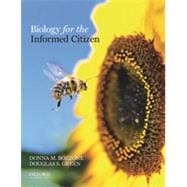With Biology for the Informed Citizen, students connect the concepts of biology to the consequences of biology. Authors Donna M. Bozzone and Douglas S. Green teach the concepts of biology, evolution, and the process of science so that students can apply their knowledge as informed consumers and users of scientific information.
Cases: An engaging biological issue opens every chapter and is revisited throughout
Concepts: Foundational biological ideas are introduced within the context of important cultural and social issues
Consequences: The concepts and consequences of biology are connected in order to help students make informed decisions about biological issues
Biology for the Informed Citizen is available with or without chapters 11-15 on physiology. Both versions allow instructors to cover the chapters and topics in the order that they choose.








